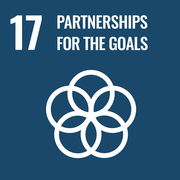
Political polarisation and interactions on social media: common patterns exist internationally
Political polarisation on social networks is an international phenomenon. Beyond the specificities of individual national contexts - which differ in terms of culture, history and political system - online political debate is articulated following common patterns at a global level. The study, published in Nature Communications and conducted by an international team of researchers, including Walter Quattrociocchi, director of the Centro per la Data Science e la complessità per la società at Sapienza University, aims to identify the communication dynamics that go beyond the political borders of individual countries.
Thanks to an analysis carried out in 2022 on the interactions that took place on a specific platform in nine very different countries (Canada, France, Germany, Italy, Poland, Spain, Turkey, the United Kingdom and the United States), the team of researchers, consisting of social and computer scientists, identified multiple recurring elements. Political polarisation - also present in the offline world - appears particularly visible in social networks, especially due to the intrinsic structure of online platforms. In all the countries analysed, political interaction networks on social networks were structurally polarised along ideological lines (e.g. right/left).
"On what used to be called Twitter, hostility between opposing political groups is manifest", says Walter Quattrociocchi. This, on a communicative level, results in more toxic interactions than those observed between members of the same political group. Contrary to what one might think, toxic interactions involve fewer users. For this content, the number of likes appears lower than for less toxic interactions".
The research highlights how political polarisation is not a phenomenon limited to a single nation but has similar characteristics across different cultures and national contexts. "Understanding these common patterns", comments Quattrociocchi, "is essential in order to think of effective solutions that can reduce political hostility and promote more constructive dialogue".
References:
Patterns of partisan toxicity and engagement reveal the common structure of online political communication across countries - Falkenberg, M., Zollo, F., Quattrociocchi, W. et al. Nature Communications (2024). https://doi.org/10.1038/s41467-024-53868-0
Further Information
Walter Quattrociocchi
Department of Computer Science
walter.quattrociocchi@uniroma1.it
